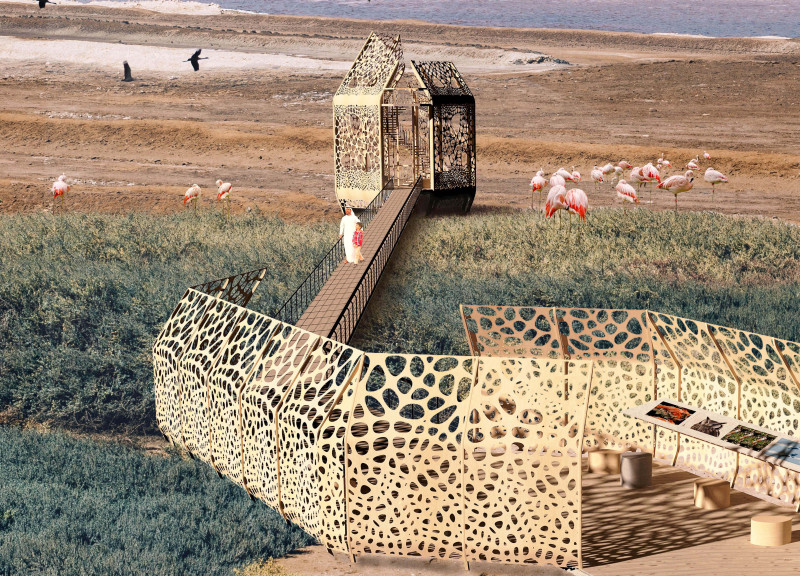5 key facts about this project
The Abu Dhabi Flamingo Observation Tower is located within the Al Wathba Wetland Reserve, designed to blend into its natural environment. The structure features an organic shape that resembles wings. It serves to provide visitors with unobstructed views of the diverse wildlife living in the reserve, facilitating a strong connection between people and nature. The concept emphasizes ecological sensitivity while ensuring that visitors can engage meaningfully with their surroundings.
Design Concept
The tower’s design reflects natural forms through a cellular pattern. This pattern serves both aesthetic and practical purposes, creating attractive openings for viewing wildlife. The various shapes of the portals allow visitors to see the landscape from different angles, enriching their experience and interaction with the ecosystem. The overall approach highlights the harmony between built form and natural habitat.
Visitor Engagement
Along the boardwalk, interactive educational digital pods are included to enhance the experience for visitors. These pods provide information about the local plants and animals, helping people to understand the importance of the wetland environment. This part of the design encourages visitors to learn and become more involved with the ecosystem, fostering a sense of care and responsibility.
Sustainable Construction
To minimize disruption to the delicate environment, sustainable construction practices are employed. One notable feature is the use of helical piles for foundational support. This method causes less disturbance to the ground compared to traditional options, aiding in the preservation of the wetland. The structure is also designed to be prefabricated off-site, which allows for quick assembly and reduces the need for heavy machinery on-site.
Material Choices
The tower is built with thoughtful material choices focused on durability and environmental care. Powder-coated steel is used for the main structural elements, providing strength and resilience in outdoor conditions. Composite deck boards are utilized for the walking surfaces, ensuring they are long-lasting while remaining eco-friendly. These selections support the overall goal of responsible architecture that respects and connects with nature.
The design culminates in a series of unique cellular openings that frame the views of wildlife. Each portal, with its different shapes and densities, creates dynamic shadows across the observation area. This detail enriches the visitor’s experience, connecting them to the habitat in a meaningful way.



























